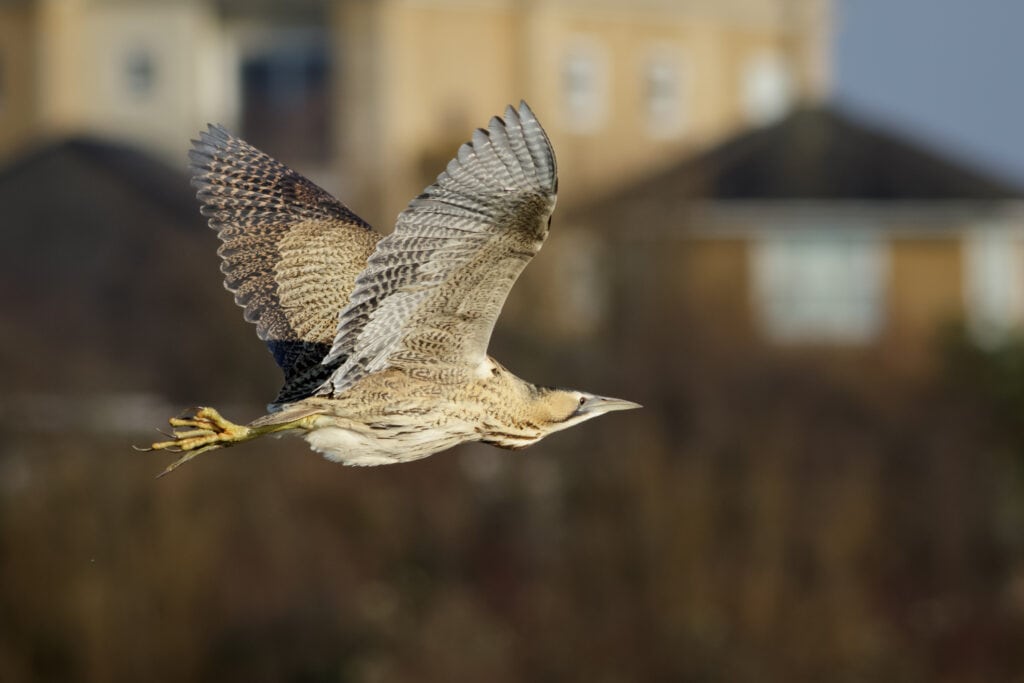Eurasian Bitterns have had a rocky history in the United Kingdom. These wading birds were common once, but their decline began hundreds of years ago and they were extinct in Britain by 1885.
Related Article: Anhingas Making Forays Into New York
Bitterns are relatives of herons. Slender, streaked, and stripy, they are perfectly adapted for wading through reedy marshes in search of fish, frogs, and other small prey. Bitterns are secretive, and they are heard more often than seen. This is partly due to their distinctive “booming” call. This call is loud, eerie, and has earned the Eurasian such nicknames as “thunder-pumper” and “water-belcher.” The sound of the Eurasian Bittern even plays a role in one of Sir Arthur Conan Doyle’s Sherlock Holmes stories:
“A long, low moan, indescribably sad, swept over the moor. It filled the whole air, and yet it was impossible to say whence it came. From a dull murmur it swelled into a deep roar, and then sank back into a melancholy, throbbing murmur once again. Stapleton looked at me with a curious expression in his face….
— The Hound of Baskervilles by Sir Arthur Conan Doyle
“Bogs make queer noises sometimes. It’s the mud settling, or the water rising, or something.”
“No, no, that was a living voice.”
“Well, perhaps it was. Did you ever hear a bittern booming?”
“No, I never did.”
“It’s a very rare bird—practically extinct—in England now, but all things are possible upon the moor. Yes, I should not be surprised to learn that what we have heard is the cry of the last of the bitterns.””
As Holmes says, the Eurasian Bittern was once extinct in Britain. In the 1900s, miraculously, the birds returned. They struggled to establish a strong breeding population, though. Some of the biggest contributors to the Bittern’s decline include the draining of vital marshland habitats and hunting for meat and skins.
Thanks to these factors, Eurasian Bitterns teetered on the brink of extinction in the UK until 1997, when just eleven males were recorded. Over the ensuing decades, a goal was set to restore population counts to 100 by 2020. The pursuit of this goal has involved the restoration of marshy reedbed habitats throughout the Eurasian Bittern’s British range. More than 3,000 hectares of restored wetland habitats have been created for these birds since the start of this effort.
Now, reports suggest that these habitat restoring efforts are paying dividends. In a recent survey, 228 male Eurasian Bitterns were counted, surpassing the 2020 conservation goal twice over. The trials of the UK’s Eurasian Bittern population are far from over, but research suggests that they may just be on the path to recovery. After centuries of struggle, this is welcome news.
Popular Article: Colorado Crane Conservation Coalition Camera Is Live

